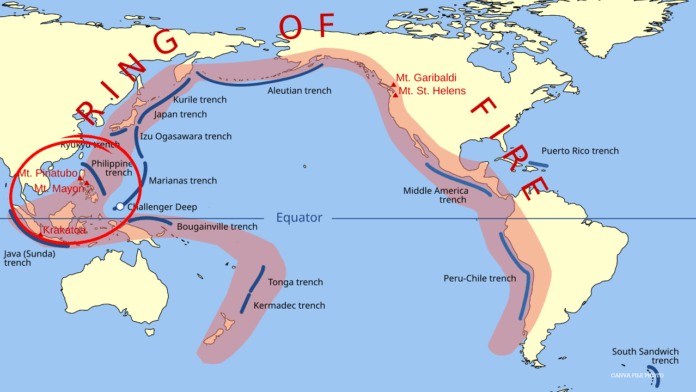Filipinos are no strangers to earthquakes. The Philippines is one of the most earthquake-prone countries in the world since it sits on the infamous Ring of Fire, or the Circum-Pacific Belt, known for its intense seismic and volcanic activity.
According to an article published by the National Geographic, about 90% of all earthquakes occur in the Ring of Fire. This happens because of plate tectonics, the theory where large moving plates that make up the Earth’s outer layer interact with each other and cause geological phenomena like volcanoes, mountain formation, and earthquakes.
Like pieces of a puzzle, these plates move, collide, or slide next to each other. The movements create stress and pressure on the plates, which are eventually released in the form of volcanic activity and earthquakes.
The Philippines sits at the crossroads of three major tectonic plates: the Philippine Sea Plate, the Eurasian Plate, and the Pacific Plate. Stress builds up as these plates continue to move and interact, making the country prone to seismic activity. Another factor is subduction zones, where one tectonic plate slides beneath another. This process melts the lower plate and creates magma, which triggers both volcanic and seismic activities.
The movements of these plates also create fault lines within the archipelago. When these faults “slip,” they release energy in the form of earthquakes. Some of these faults are currently “ripening” — gradually accumulating stress over time — which could lead to stronger earthquakes in the future. With more than 7,000 islands, the Philippines has numerous active faults spread across the nation, each with its own potential for seismic activity.
With the Philippine Institute of Volcanology and Seismology (PHIVOLCS) estimating around 100 to 150 earthquakes every year, it is important that the national government continue its thrust to promote disaster preparedness. This can include revamping its building code, intensifying public information and education campaigns, strengthening earthquake safety measures, and developing new and improved early warning systems.



